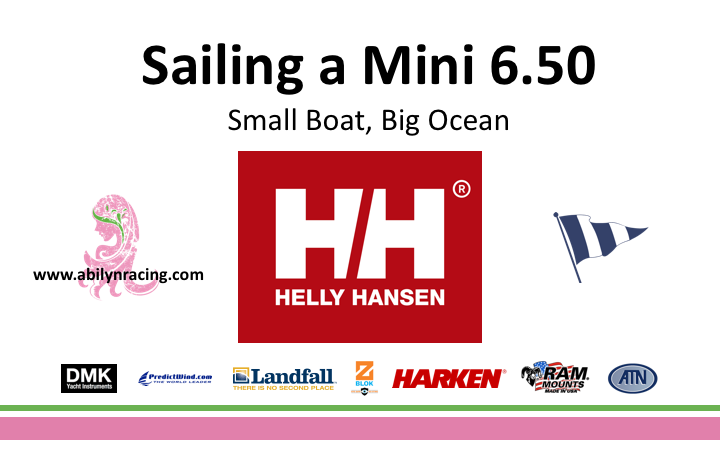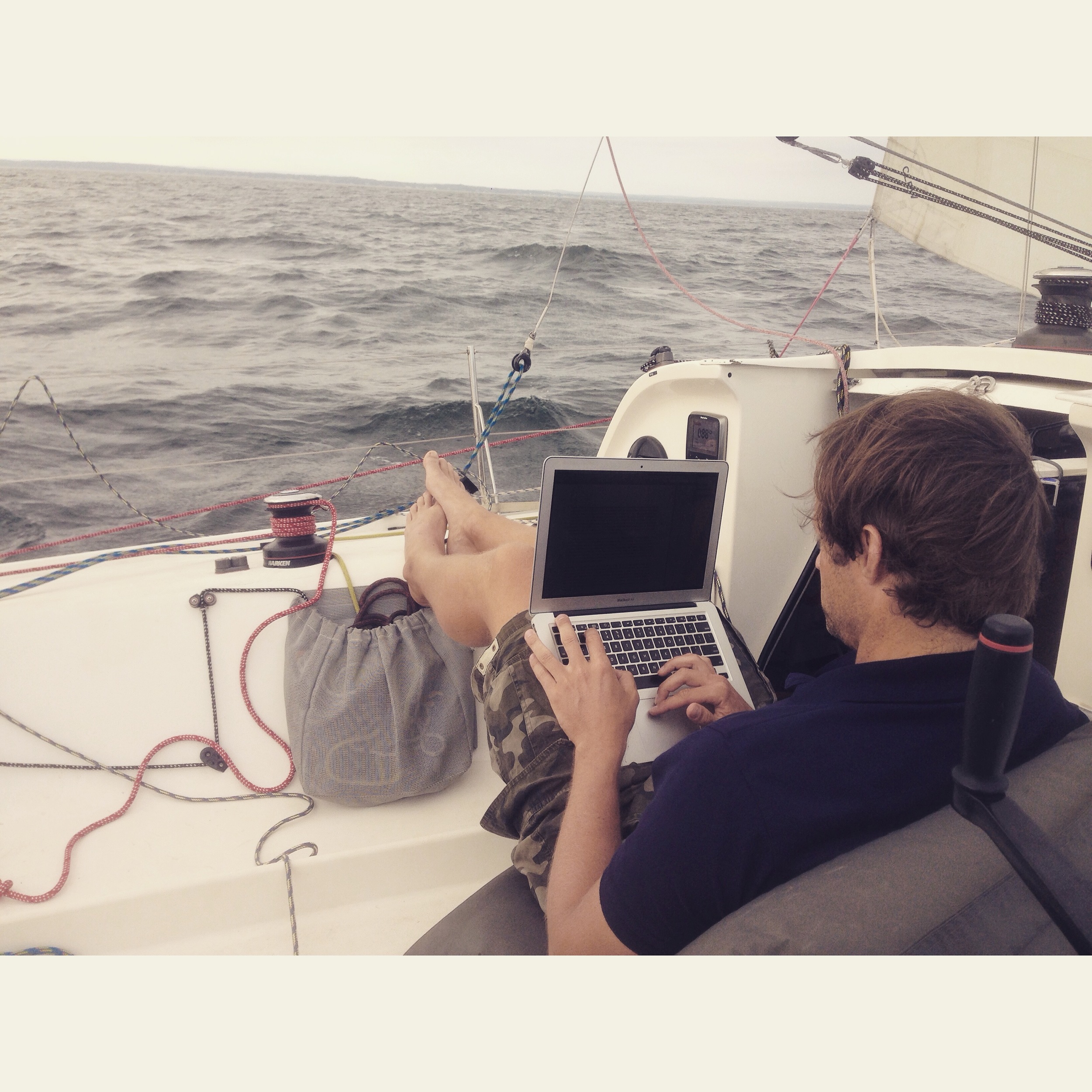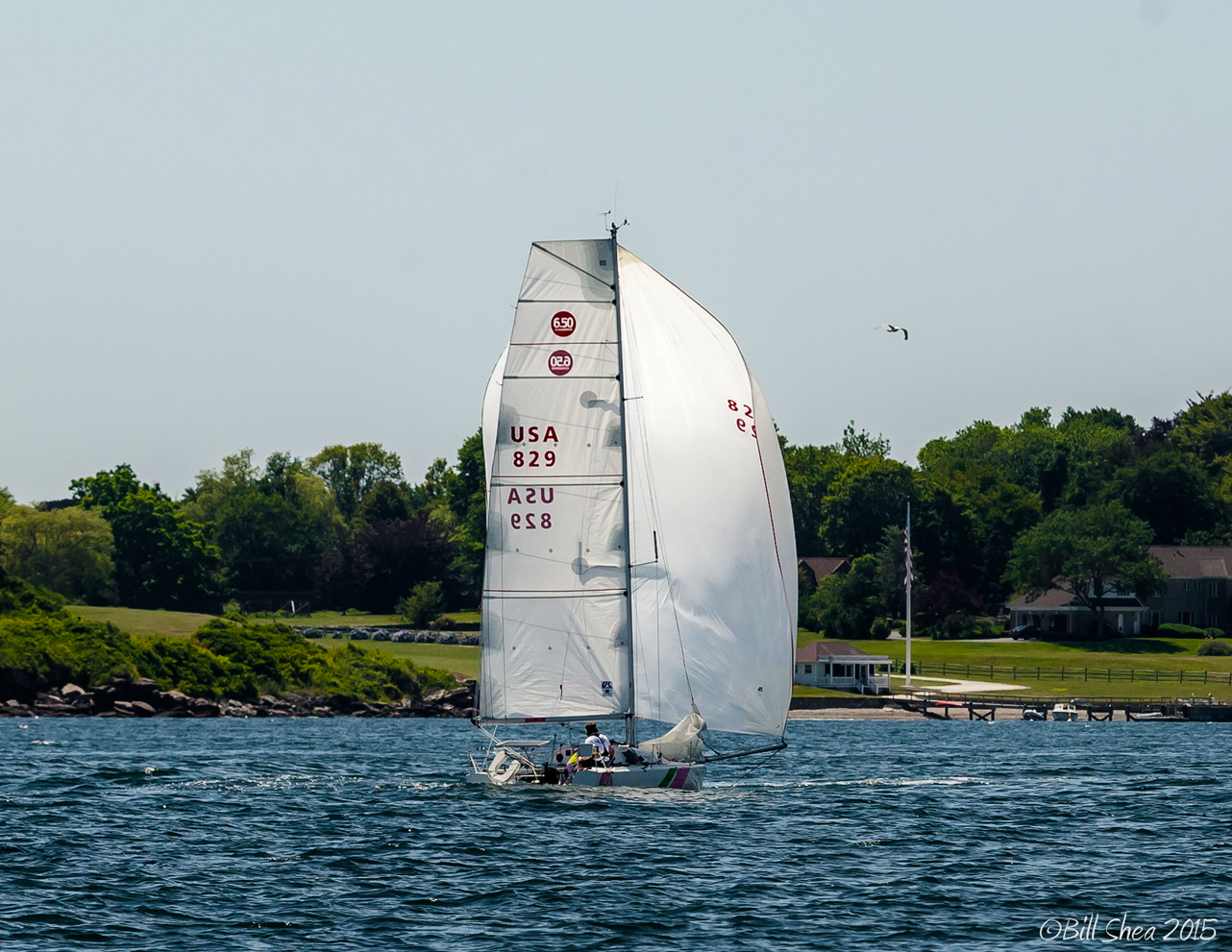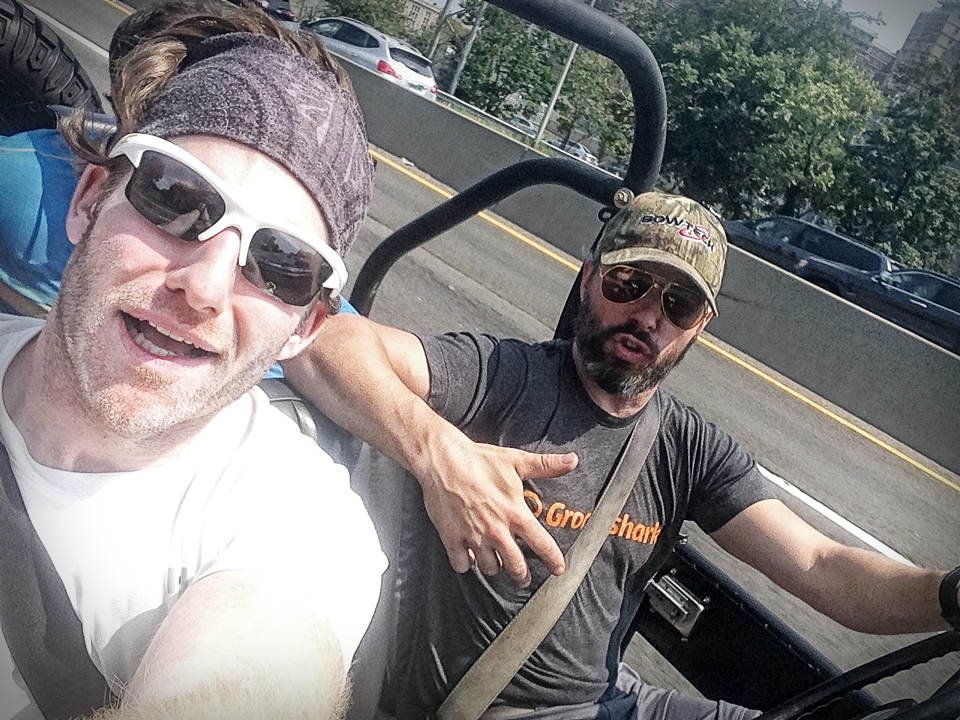As the gun sounded for the start of our division, we crossed the line to windward of our competition, the Mini 6.50 Frogger, sailed by friends Josh Owen and Miles Abrams, and began the reach towards Montauk Point on starboard tack. With the breeze holding around 23-25 knots, both Minis started with a double-reefed main and 110% jib. Feeling underpowered, we shook out a reef and quickly pulled away from Frogger as we jib reached at 100-110 TWA at 9-11 knots SOG down the southern Long Island coast--my second transit of this coast in five days.
For the next 30 miles, with Frogger behind us but still in our sights, Sam and I had an ongoing discussion whether or not to launch a kite. Our TWA was much too close to the breeze to put up a kite in this wind strength. But, as Sam occasionally saw 125-130 TWA when he glanced at the instruments, he pushed for the kite--nearly berating me into seeing his view of the world, which is to say, opportunistic. In business, Sam is an entrepreneur and has a healthy appetite for risk. I, on the other hand, am naturally risk averse, hence my decision to become a lawyer in "real life." With none of the boats ahead of us going for kites, I wasn't quite ready to give into Sam's faux-bullying. So we held off until reaching Fire Island where we were able to bear off a bit and open up the TWA, putting us well into kite territory.
Upon confirmation from Sam that he was ready on the tiller and mainsheet, I hoisted the masthead halyard locked into the Code 5. As I hauled on the halyard from pit, I reminded Sam NOT to trim the spin sheet. MADE! Kite trimmed. Jib down. Baby stay set hard!. Side note: In retrospect, we should have set the kite sooner.
Hoisting the kite in this breeze is like adding Liquid Schwartz to the gas tank of a flying Winnebago. 13 knots of boat speed. 14 knots. 15 knots. Space tracks. On Abilyn, you can determine downwind boat speed based simply on the symphony of harmonics she generates off the breeze. When Abilyn is on the verge of planing, her keel generates a low-pitched, dull buzzing sound, indicating about 9-10 knots of boat speed. At this tone, you can sense Abilyn's frustration as she desperately wants to escape the prison of displacement. When that buzz transitions to a buttery smooth high-pitched tone at the border of human hearing, her bow has lifted and she's now surfing at 14+ knots, free.
I am Abilyn's Pavlovian dog--the sound produced by her keel when it reaches an almost inaudible frequency induces a change in my mental and physical state. I feel physically lifted, mentally invigorated, awakened--feelings that no doubt are the result of the bartender in my brain serving up a potent cocktail of adrenaline, dopamine, and other endorphins. This is Abilyn's siren song that keeps luring me back after enduring miles and miles of slogging upwind with horrendous tacking angles.
Sam navigated the sea state brilliantly, keeping the boat powered up and surfing under Code 5 and single-reefed main while at same time keeping her from getting pinned in a trough with low boat speed, which would have the effect of inducing a nasty broach. I suffered this fate--the one broach we had on the outbound leg.
Then, the gust. The 23-25 knot breeze quickly shot up to 30 knots. At the same time, we picked up a wave and shot forward, hitting our record high of 17.4 knots. Two words: holy shit. I'm kicking myself right now for not grabbing the GoPro, but I was busy ensuring that the boat didn't blow up. With Sam in helmsman heaven, I cleaned up the cockpit, which is important not just on a Mini, but on any boat--but more important on a Mini. I flaked every line, which was now ready to run at a moment's notice. I also tweaked the adjustable bob stay on the pole, raising its outboard end to prevent the pole (and kite) from nose-diving into the back of a wave.
Managing a Mini in breeze is exhausting. As Sam is the better downwind sailor between the two of us, we decided that he would continue to drive as long as the breeze hovered around 30 knots. As Sam said, "I can do this shit all night!" Interpreting this to mean he had the boat under control, I went down below and tried to sleep. But even with an eye mask and ear plugs, sleeping while Abilyn surfed at an average speed of 15 knots was impossible. Not only was the sound down below deafening, but I couldn't shut off my brain. Anticipating the worst, as I always do when conditions become boisterous, I interpreted each of Abilyn's sounds as shrieks and groans of pain, signaling that, any any moment, she would disintegrate. But Abilyn wasn't in pain. With all her lines and gear in working order, and with Sam skillfully guiding her, it became more apparent as dusk gave way to night that what I heard as shrieks and groans was actually the roar of Abilyn's battle cry, simply masked by my own concern for her well-being. Indeed, Abilyn was purpose built for these conditions.
Sam called me on deck around 2100. "Breeze is down to 23 knots. Your turn to drive." Once on deck, we shook out the reef in the main and switched to the bigger kite as our downwind angle had widened. You can't peel on Abilyn. So I hoisted the jib to keep the boat powered up before dousing the Code 5 and putting up the Code 2. We sailed as deep as we could, but with the breeze clocking slightly, we were being drawn deeper into the ocean and away from Montauk Point.
The next tactical decision was when to gybe back towards land. I checked the iPad, where I'm able to analyze GPS, AIS, and all of Abilyn's instrument data thanks to my DMK Box. I noticed that we were in the company of some larger and well-sailed boats, including the Columbia 32, Weegie. So we decided to continue on starboard, sailing our most optimal angle.
Friday, July 31
A New Day. A New Breeze.


























































